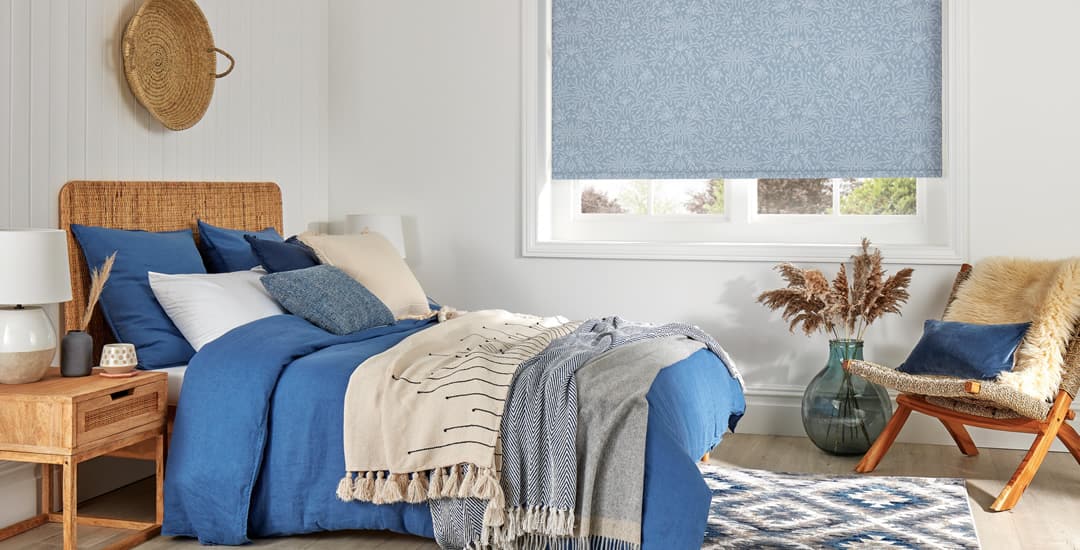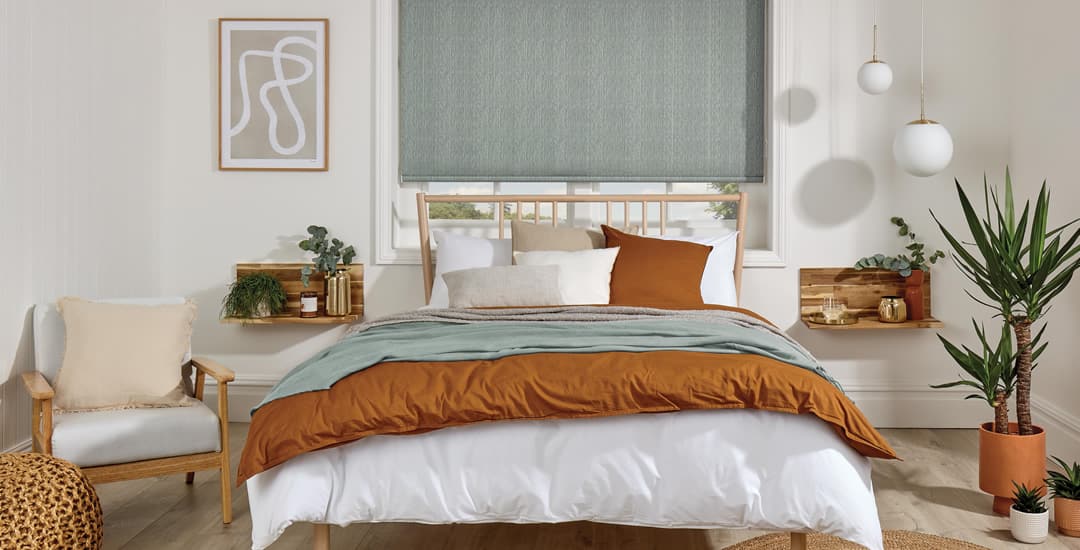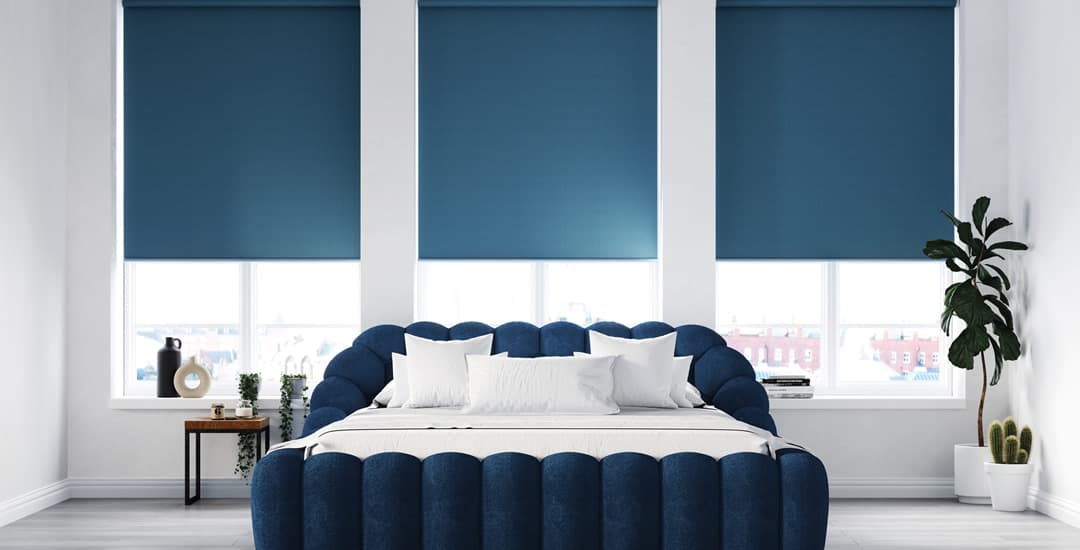
This depends on several things, being, the style of blind, the material that the blind is made of, how the blind is hung, and possibly even how many blinds you’re using.
Sorry! But “are blackout blinds really blackout” isn’t a simple yes or no question. A blind sold as a blackout blind will be made of a material that’s impermeable to light, so you can safely say that the fabric of a blackout blind is really blackout. However, other factors that come into play are what determines if a blind really functions to block all external light in the way that most people expect or are looking for from a blackout blind, and this is what I’ll talk you through in this blog post.
Read on to find out whether or not blackout blinds can stop 100% of light or not, and how to maximise your chances of achieving this.
Are blackout blinds really blackout in terms of their materials?
Any blind that is sold as a blackout blind should be made of a material that is itself impermeable to light. By this I mean that if you held a super-bright torch flat up against the fabric or material that the blind is made of, no light should shine through it on the other side.
The material of a blackout blind should really be blackout – otherwise it’s known as a dimout blind. Some of these are very dense and almost light-proof, but they’re still not blackout blinds.
Are blackout blinds really blackout in terms of their construction?

By this I mean, the way the fabric or material of the blind is put together. For a blind like a roller blind or a Roman blind, this is self-evident; the blind is comprised of one solid sheet of fabric with no gaps nor potential joins for light to get through, so these types of blinds aren’t going to let light through the material parts at all.
Other types of blinds though like vertical blinds and Venetian blinds are made of individual louvres or slats, which all need to be closed and lying flush to form an uninterrupted sheet of blackout material.
With blinds of this type, if the louvres/slats don’t lie flat and overlapping, and in the case of vertical blinds, if they move in a breeze, light can get through. Slatted blinds could potentially allow light through the slat joins if the slats are warped or damaged at all. Also, blinds of these types that don’t have ladder tapes overlying their lift cords will allow a small amount of light to pass through the tiny holes in the slats that the lift cords run through.
However, with the exception of light passing through lift cord holes and using a vertical blind in front of an open window on a breezy day, it’s fairly uncommon/unlikely for any of these theoretical issues to actually cause light to pass through the blind due to its construction.
Are blackout blinds really blackout when hung?

This question – are blackout blinds really blackout when hung – is really the crux of the matter when it comes to determining if a so-called “blackout blind” is really going to block all external light.
If you’ve picked a blind made of blackout fabric and it’s either one piece of fabric (like a roller or Roman blind) or closed properly/lying flush for other types of blinds, the way you hang it is what determines how well it works to block light.
This is because even though the blind itself might not allow light through, the sides of the blind might. For instance, if you hang a blind inside of the window recess, there will be a gap between the blind and the glass of the window, which combined with the fact the sides of the blind need to stop short of the wall by a small amount, means that light can get through. The same applies for the gap at the top of the blind.
This will tend to only be a really negligible amount of light, which is fine for many people, but still, it means that the blind isn’t actually functioning as a blackout blind per se.
If you hang the blind outside of or over the window recess, you have far better odds of achieving a full blackout, particularly if you make sure to order a blind at least 10cm larger on all four sides than the window recess you’re covering. This, plus choosing a style of blind that has a narrow header rail so that it doesn’t stand overly proud from the wall, will maximise your chances of ensuring that your blackout blind is really blackout.
That said, the only fool proof/guaranteed way to ensure a blackout blind achieves a 100% blackout effect in some cases is to use two blackout blinds in combination; one hung inside of the window recess and one over it.
This is unnecessary and/or overkill for most people, but if you haven’t managed to achieve a full blackout by other means and are really committed to the cause, this solution will end your woes.




